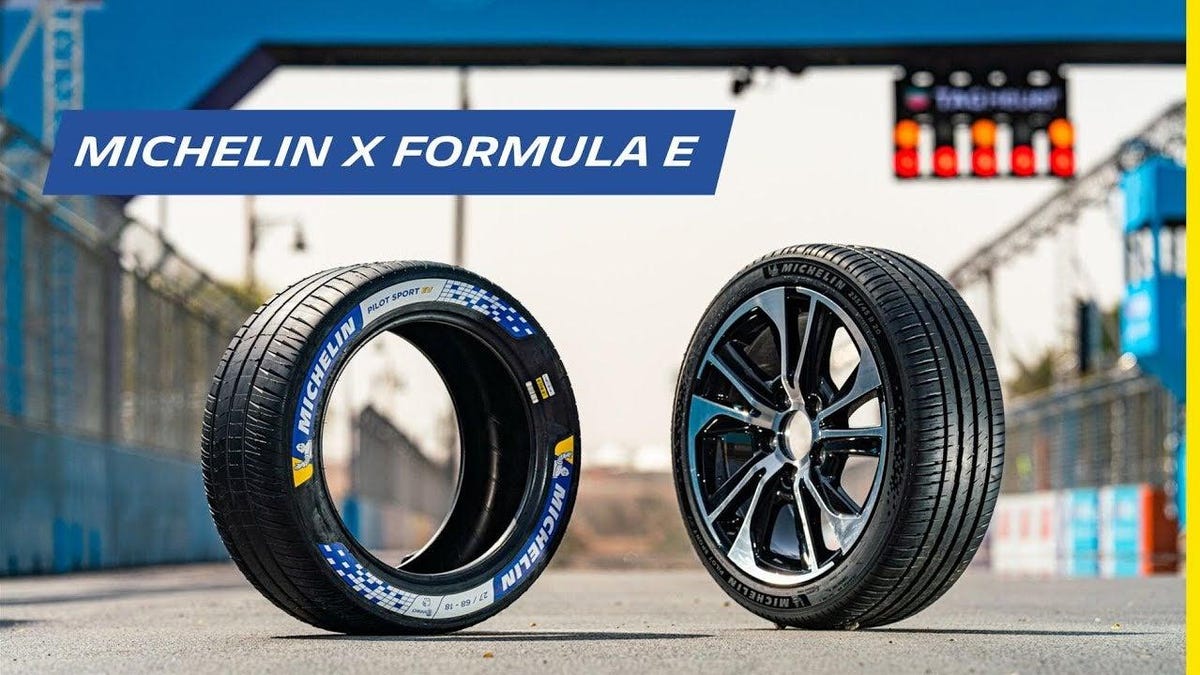Tire companies have begun making EV tires. There’s nothing really special about them. Despite all their claims, most are no different from a tire that’s on a gas powered vehicle. They’re working to change that it seems as the race is on to develop the perfect, all around EV tire.
Wired reports that tire manufacturers such as Michelin and Continental are developing the next generation of EV tires. It’s not an easy task as these tires will have to deliver on multiple fronts. One of the challenges is rolling resistance. Less rolling resistance means more range, so manufacturers are experimenting with different compounds to get less rolling resistance.
Manufacturers are experimenting with nanomaterials in their tires, such as nanocarbon and nanosilica, to improve performance, traction, and durability. There is also research into bio-based alternative compounds such as guayule and dandelion rubber.
You can reduce rolling resistance by reducing tread depth, but this also means the tire won’t last so long and produces increased noise. Continental, however, thinks it has the answer. “We have developed special soft rubber compounds that allow us to reduce rolling resistance and noise at the same time without sacrificing mileage,” says Thomas Wanka, principal technology development engineer at Continental.
Another issue is tire particulates. EVs do not produce emissions, however they do produce particulates from tires and brake dust. Since electric powertrains are so heavy, EVs burn through tires 20 percent faster than a internal combustion engine.
However, it’s tricky directly comparing the pollution from particles shed by tires to exhaust fumes from an internal combustion engine. Even though 1.5 kilograms of rubber particles still sounds bad, there is a significant difference between particle sizes. The major culprit for public health is NOx, which causes smaller particulates in the “PM2.5” category (meaning the particles are 2.5 microns in diameter). For tires, only 1 percent of particulates are below PM10 (10 microns), and 0.2 percent PM2.5 or below. Most PM2.5 pollution in urban areas still comes from vehicle exhaust NOx.
Unfortunately, there is scant research into the health effects of tire particulates. One of the few comprehensive studies was completed more than a decade ago, in 2012. “At that time, it was not decided that it was the priority subject,” says Gary Guthrie, senior vice president at Michelin. “The priority subject was more understanding the fate of particles in water and how they degrade.”
Another innovation corporate scientists are exploring is biodegradable tires made from sustainable materials like recycled tires. Gunnlaugur Erlendsson, CEO of a startup tire company called Enso says that while this would be a win for the environment, a biodegradable tire wouldn’t have great durability. “A tire that biodegrades on the vehicle would not be good for durability. However, it would be beneficial if the tire particles that shed during driving could biodegrade in the environment, preventing them from accumulating in our air, land, and oceans,” he said.
Tire particulate is pretty terrible, and not just for humans. Research scientists in the Pacific Northwest called tire particulates the “DDT of our generation” for its affect on salmon and other wild fish. If memory serves, DDT ended up not being so good for human life either.

